California Central
- Alison (No Fixed Address)

- Apr 22, 2021
- 3 min read

We've spent a month in Central California, first on the coast in Santa Barbara and Watsonville, then farther north and inland in West Sacramento.
Santa Barbara is truly one of the most beautiful towns we've ever visited. Part of that might have been the time of year: semi-tropical foliage and coastal succulents were in breathtaking bloom wherever we looked, often framed by sapphire-blue waters.



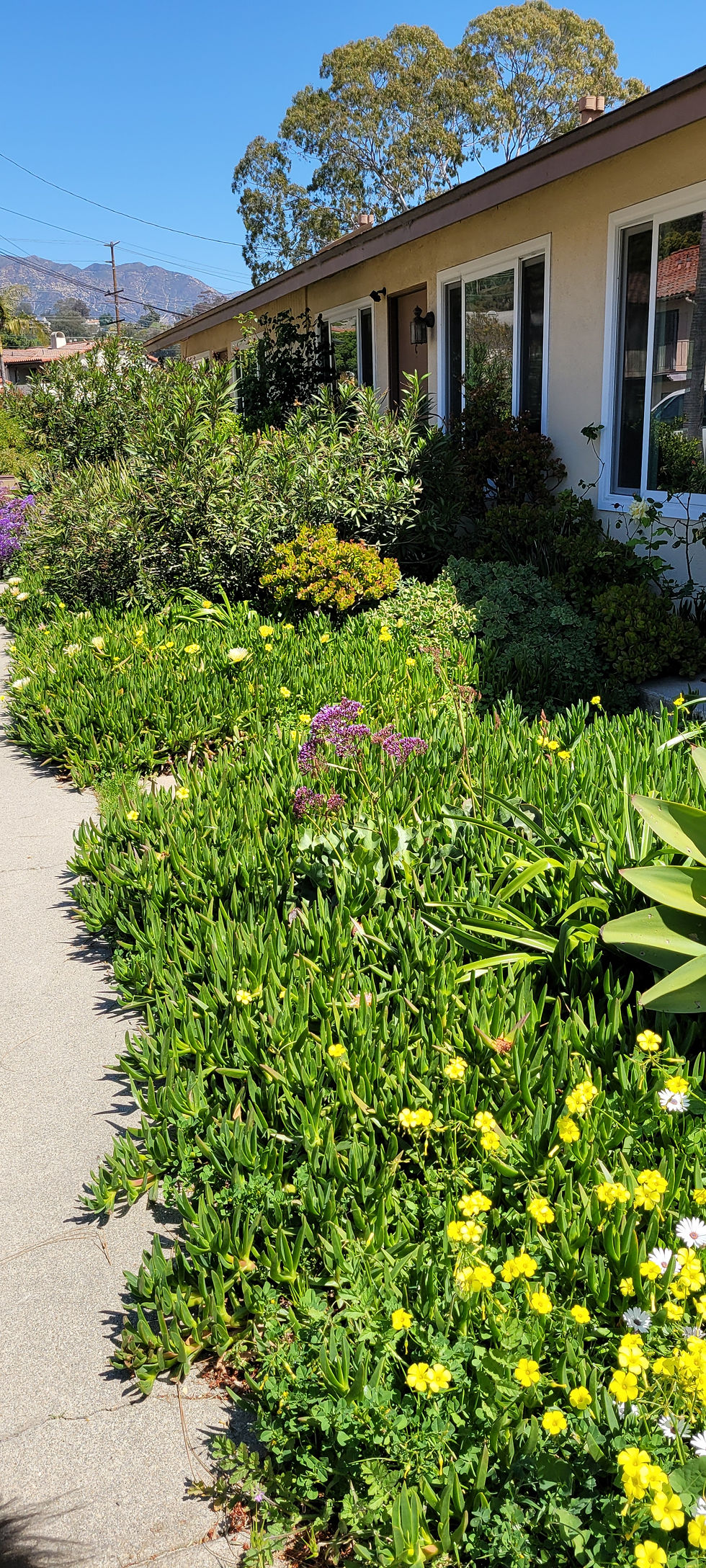
The sand and rock beaches enticed people to the shore for walks around tidepools of barnacles and anemones, and next to flocks of pelicans; dolphins occasionally surfaced just offshore. The Pacific waters, being only around 60 degrees, invited the active: surfers, hydrofoil kiteboarders, and sailors.


We were able to visit with several college friends in Santa Barbara - some who live there, and others who were also visiting - which is another great advantage of this traveling life.

From Santa Barbara, we continued north to Watsonville. We had originally planned to stay in Monterey, but found few RV sites available, and at prices in the $150/night range. Instead, we stayed at a peaceful city park on Pinto Lake. (We also found that being farther inland meant more sun!) City parks are often hidden gems for RVers: both Pinto Lake in Watsonville, California, and Pilot Knoll in Highland Village, Texas (last October) have been beautifully situated and inexpensive. (We did forfeit amenities such as laundry rooms and dog parks.)
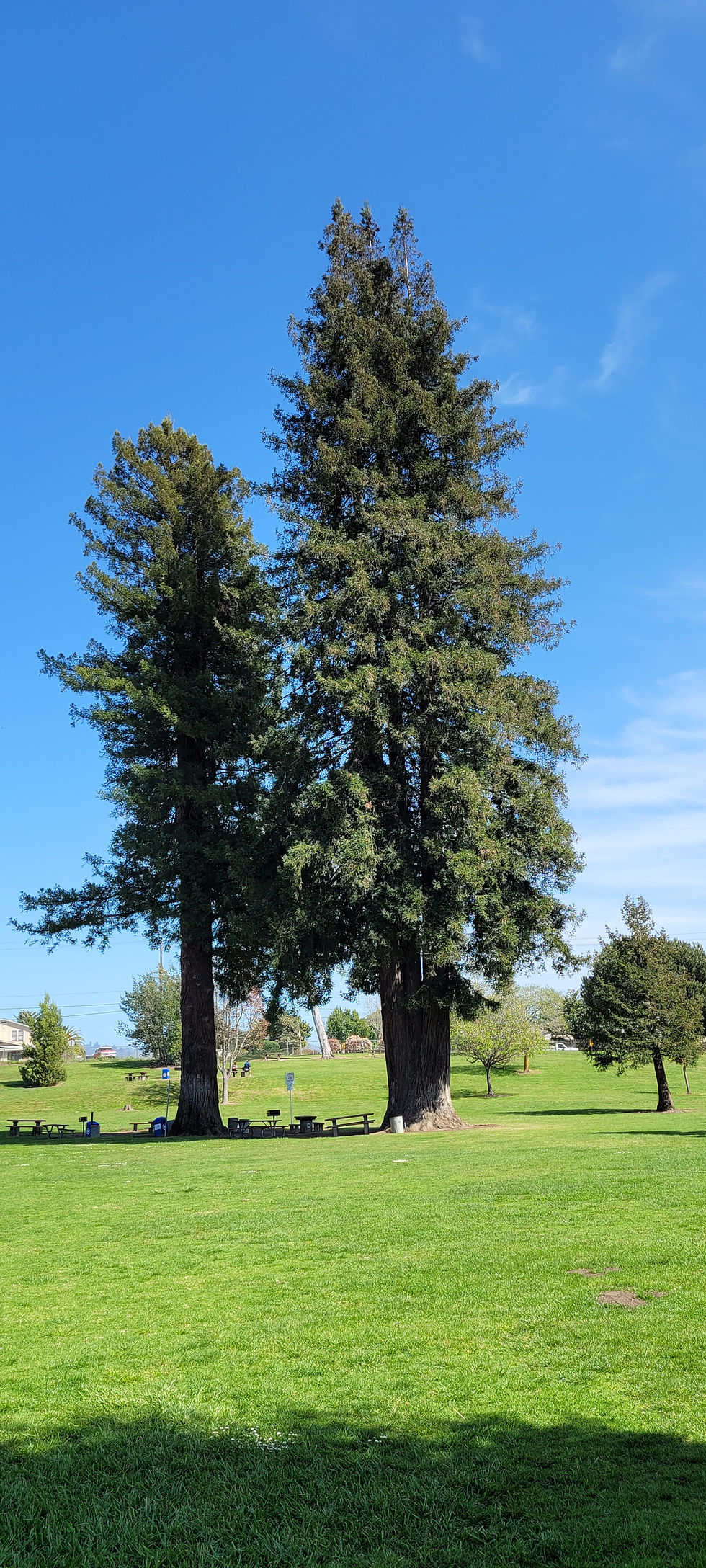
I was astounded to find out that our little city park in Watsonville was where Europeans (Spanish explorers) first saw a coastal redwood tree. No tree grows taller (the redwood's cousin, the giant sequoia, found only in California's Sierra Nevada Mountains, grows bigger around but not quite as tall), and the European explorers were notably impressed. While the trees currently in the park are younger groves of redwoods (redwoods are believed to live up to 2,000 years), they were still impressive to us.
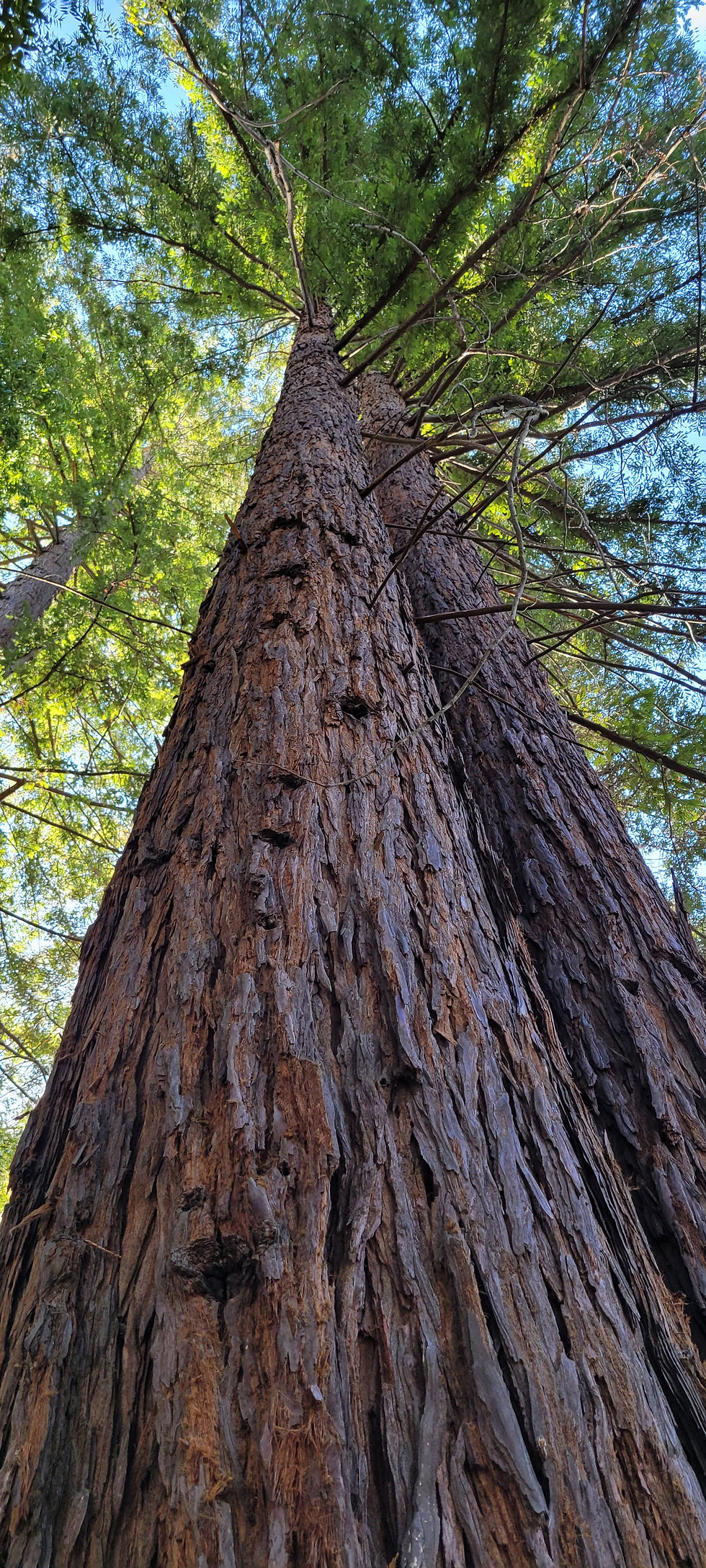
From Watsonville, we headed northeast to West Sacramento. Located just across the Sacramento River from Sacramento proper, it is the site of the Port of Sacramento, linked to the Suisun Bay/San Francisco Bay/Pacific Ocean via a 43-mile long Deep Water Ship Channel. The Port of Sacramento is a non-shipping-container port, and traffics in local bulk agricultural products (such as rice) and materials (such as cement) and in heavy equipment.
Doug's e-bike exploration of the area took him through acres and acres of orchards and fields. California, and especially California's Central Valley, is an agricultural powerhouse, feeding the U.S. and the world. We had begun seeing this as soon as we entered California from Yuma, Arizona. But it really became clear in Watsonville and West Sacramento:




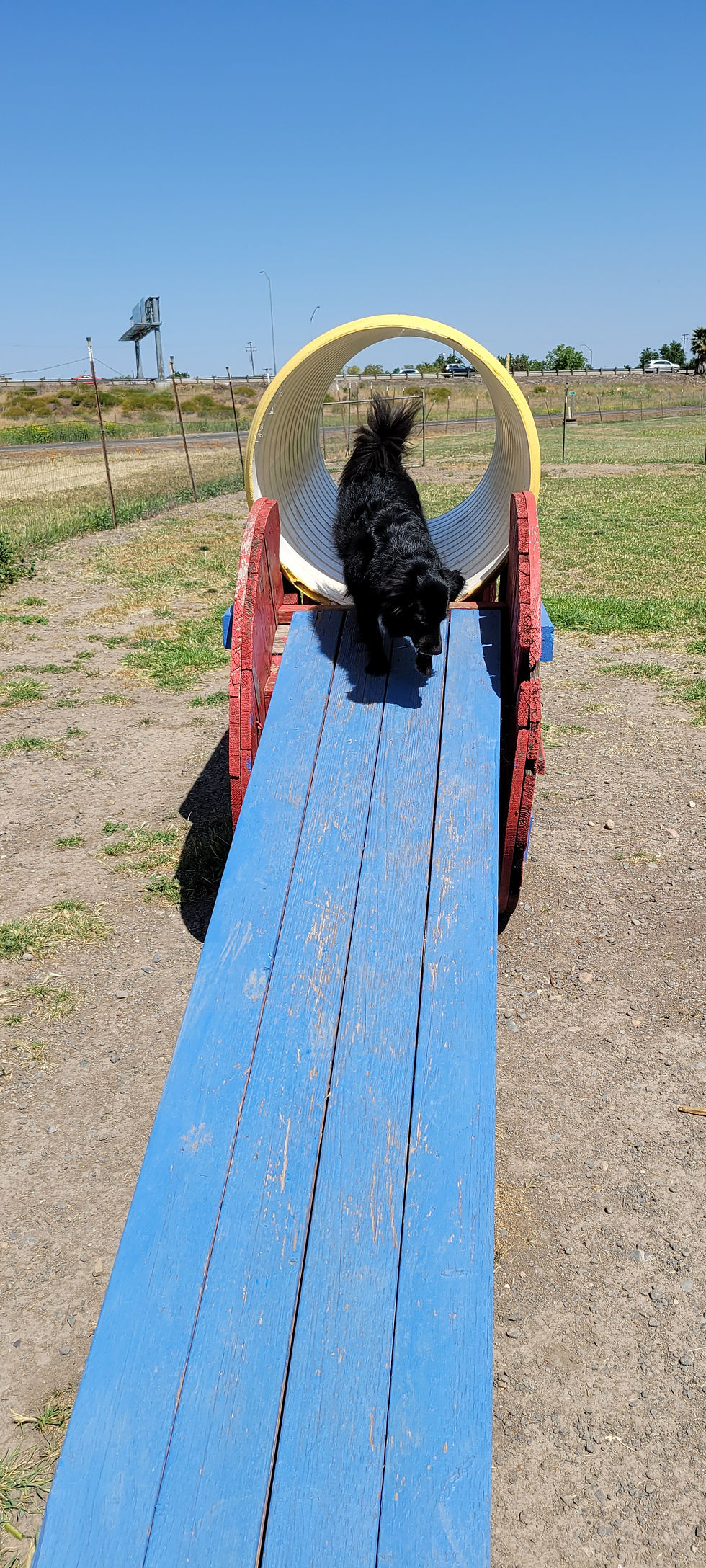
Our campground in West Sacramento was exceptionally well-cared for, and included the benefit of a fenced-in dog area with obstacle course!

The campground was situated on a little lake, which hosted ducks, geese (including two families of goslings that hatched while we were there!), cormorants, blue herons, white egrets, and frogs (based on the night sounds).

(The campground owners also had a small farm pen with a couple of goats and pigs, and chickens that sometimes flew the coop and wandered around the grounds.)
Our e-bike rides took us by California's capitol building, and by many state government department and state association buildings. The park around the capitol building had plantings of West Coast trees, with each one labeled - it was hard to tear Alison away from that! We also visited the historical center of Sacramento, and the city history museum located there. We were interested to learn that the California Gold Rush, which consisted of some 300,000 people arriving in the state from throughout the world during a span of seven years, was touched off by gold discovered in 1848 at Sutter's Mill, about 45 miles east of Sacramento. We were impressed that so many "forty-niners", as well as merchants hoping to profit from the gold-seekers, ended up staying in Sacramento, given that the city suffered from massive floods in 1850, 1852, and 1862; devastating fires in 1850 (twice!), 1852, and 1854; and a cholera epidemic in 1850.
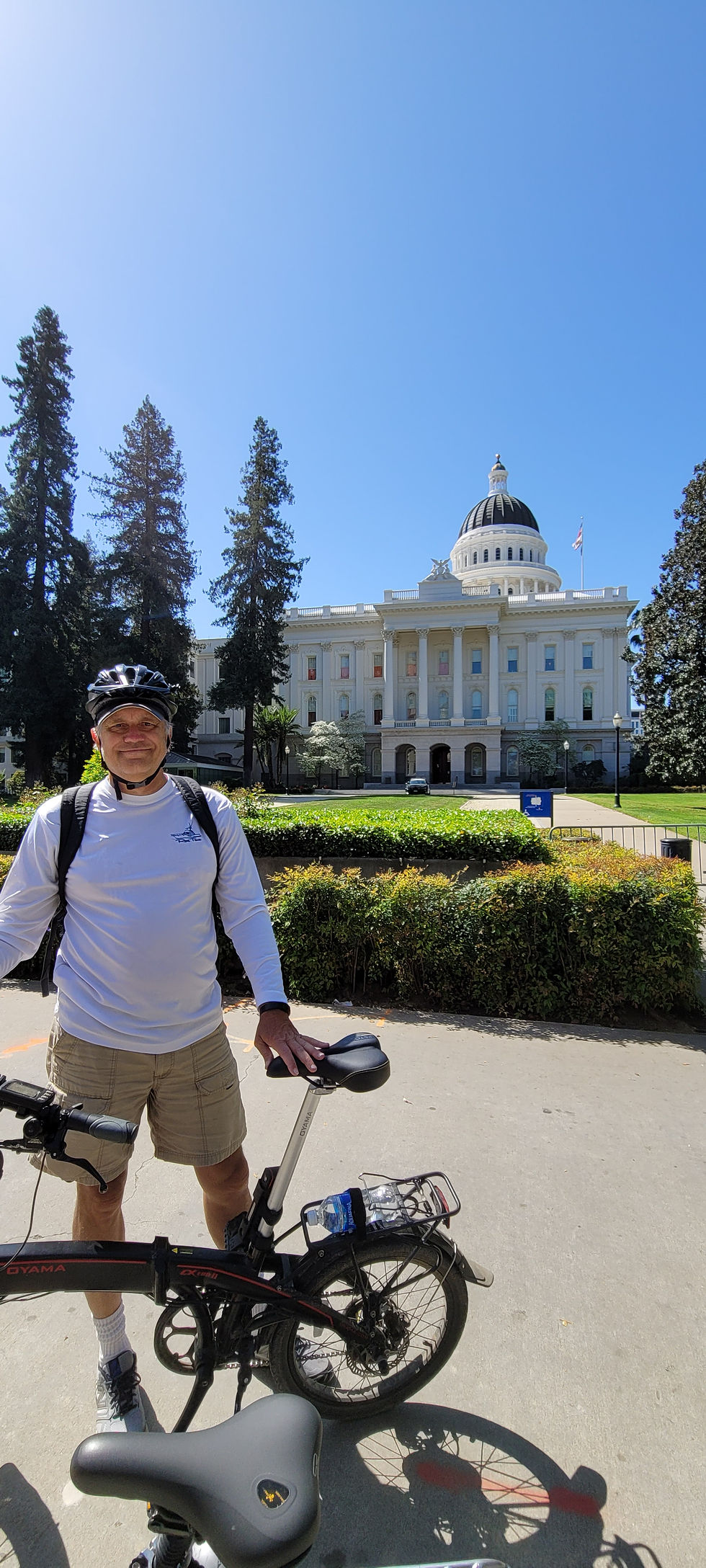



Our sojourn in Central California proved to be even more interesting and enjoyable than we had anticipated. Next we head west to the San Francisco Bay area!
For those who like this sort of thing, here are some animal pictures from the West Sacramento riverside, and the city zoos of Santa Barbara and Sacramento:





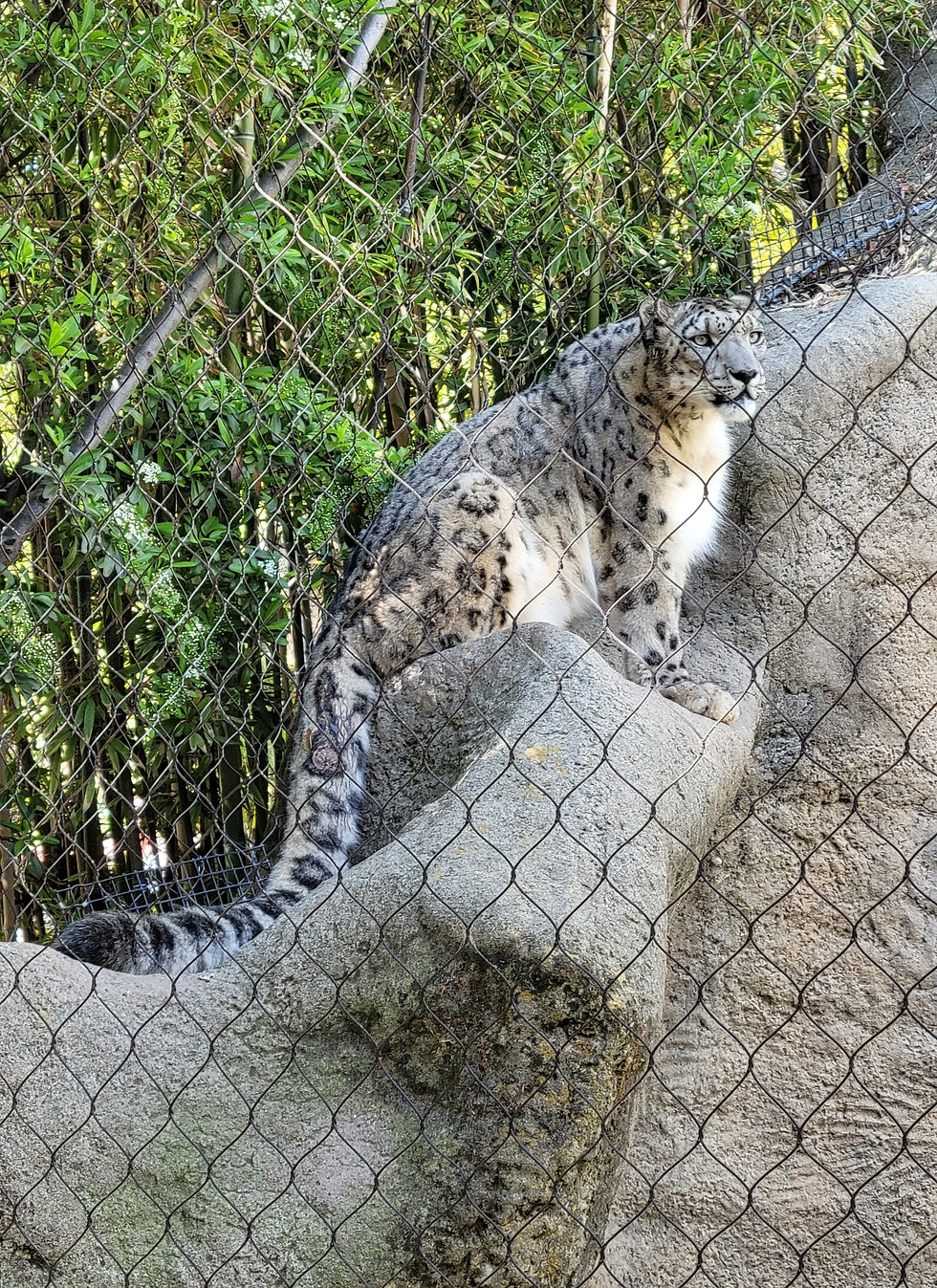





Comments